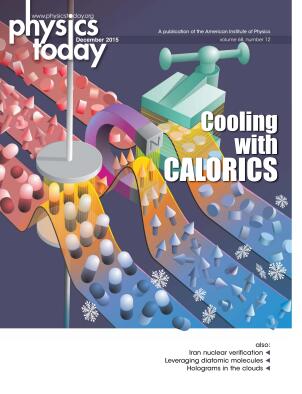Physical Models of Living Systems
DOI: 10.1063/PT.3.3024
“Learn from science that you must doubt the experts.” That famous Richard Feynman quote is Philip Nelson’s opening invitation to readers of Physical Models of Living Systems, a well-written and carefully structured text that’s particularly compelling for its smooth integration of biological experiments, physical models, and computational exercises. Readers who complete the text will be well equipped with the computational and mathematical skills needed for a quantitative understanding of a range of biological systems and thus be enabled to “doubt the experts” and independently evaluate scientific claims.

Nelson is widely recognized for his excellence as a teacher: He is a 2009 recipient of the Biophysical Society’s Emily M. Gray Award for his contributions to innovative teaching of biophysics. Physical Models of Living Systems is different from his previous book, Biological Physics: Energy, Information, Life (W. H. Freeman, 2003; reviewed in Physics Today, November 2004, page 63
The book is organized into 3 parts and 11 chapters, plus an epilogue and 3 appendices. Each chapter begins with an overview of the goals and with chapter-specific biological and physical focus questions. Interspersed throughout are several tasks designed to increase understanding and proficiency through self-testing. Particularly helpful are the figures that Nelson reprises from previous sections; their reappearance in the margins makes for easy reference. For more advanced students, the author provides supplemental in-depth details and exercises. Each chapter concludes with a big-picture summary, key formulas, further reading, and numerous analytical and computational practice exercises.
The first two chapters make up part 1 of the book, “First Steps.” It is a 23-page introduction to the relationship between physics and biology and to basic concepts of fitting and modeling experimental data. Nelson uses HIV infection as a captivating biomedical problem to spark the reader’s interest and illustrate the power of mathematical modeling.
Part 2, “Randomness in Biology” (chapters 3–7), covers the fundamentals of probability theory: randomness, discrete and continuous probability distributions, maximum likelihood, parameter estimation, and Poisson processes. Nelson keeps the reader engaged by intermixing the core concepts and necessary mathematics and terminology with lively examples that illustrate the power of statistical analysis. I particularly enjoyed his skillful demonstration of the value of computer simulations in the context of the Luria–Delbrück experiment, which established the occurrence of bacterial genetic mutation in the absence of selection.
In part 3, “Control in Cells” (chapters 8–11), the author builds on the skills presented in part 2 by diving deep into the cell’s inner dynamics and covering important problems of control circuits—for example, gene expression, enzyme dynamics, genetic switches, and biological oscillators. Because the complex biological details may seem overwhelming, Nelson first introduces biological control systems through familiar physical systems: for example, a centrifugal governor introduces negative feedback control and a mechanical toggle sets the stage for biological toggle switches. He then applies the concepts to such concrete biological examples as repressor cooperativity, the lambda and lac switches, and genetic oscillators.
Physical Models of Living Systems is an entertaining and engaging textbook that hits a perfect balance between biological experiments, physical models, and computational approaches. Thanks to Nelson’s skillful writing and the excellent accompanying online resources, this book will appeal to a broad audience and teach even a beginner how to solve problems numerically. It could serve as the primary text for an introductory course in quantitative biology or as enriching supplemental reading material for undergraduate or graduate biophysics or bioengineering courses.
More about the Authors
Eva-Maria Collins is an assistant professor of physics and of cell and developmental biology at the University of California, San Diego. She studies pattern formation in development and regeneration.
Eva-Maria Collins. University of California, San Diego, La Jolla.
